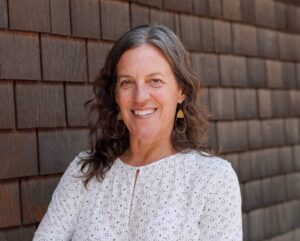Annually, Neiman Lab invites leaders in journalism to offer their forecasts for the upcoming year. Christa Scharfenberg, our Project Director, was invited to contribute, and the ensuing article encapsulates her insights.
More Publicly-Funded Initiatives to Support Local News
Local news outlets continue to fight for their lives nationwide: the State of Local News 2023 report maps current news deserts in 204 counties and identifies hundreds more at risk.
Like the nation, California’s local news ecosystem is fragile: In 2023, four of our 58 counties are without news outlets and 11 have just one, as documented by Medill. But unlike much of the nation, California is testing out a promising new model to support local news — what could be a solid first step for skeptics of public financing for local media.
Our California Local News Fellowship, based at the UC Berkeley Graduate School of Journalism, launched in 2022 with $25 million in state funding, spearheaded by California State Sen. Steve Glazer. It aims to directly meet information needs in communities across the state — especially those historically underrepresented in the newsroom decision-making and opinion-shaping table — and support the next generation of journalists as they launch their careers.
In September 2023 we sent the first of three cohorts of fellows to spend the next two years reporting in newsrooms across California, from Humboldt County to the north and San Diego to the south. The current funding will support two more cohorts — for a total of up to 120 journalists — to help cover California’s communities.
The California Local News Fellows are early-career journalists and generally mirror the demographics of our state. Nearly all of them attended public universities in California for their undergraduate or graduate studies. They are working in traditional newspapers, non-profit news organizations, ethnic media outlets and for public radio stations throughout California, with a focus on reporting on underserved communities.
Our fellows receive intensive support, training, and mentorship from the fellowship program — and are paid full-time salaries and benefits by UC Berkeley. In just a few months since the first cohort launched, the fellows have written and produced a steady stream of reporting, including these stories about a proposed new jail in Santa Cruz, serious violations of state and federal health and safety standards at a now-bankrupt hospital in the Central Valley, ongoing reporting on the race to control vast lithium stores under the Salton Sea in Southern California’s Imperial Valley, and disparities in public parks investments across neighborhoods in San Diego.
The for-profit business model for local news is broken and, while the emergence of non-profit media — where I spent the last two decades — is filling significant gaps across the country. But the hard reality is that there is not enough journalism philanthropy to meet the information needs of America’s communities. We need to explore all available options, including public financing models being considered at the federal and state levels. This includes various tax credit programs for government advertising in local outlets, direct grantmaking initiatives and incentives to return ownership of outlets to local communities, among others.
The local news fellowship model is gaining traction in states beyond California and may be a way to test the country’s comfort with public financing of news. With all public support options, there are understandable concerns about editorial independence from government influence. But with the right guardrails in place, these concerns can be assuaged, just as the undue influence of corporate advertisers has been managed in newsrooms for decades.
Public-funding of journalism fellowships has passed this year in Washington state and New Mexico (and is under consideration in a few others). In each of these cases, a public university is administering the program. State legislatures are accustomed to funding public universities and university-based journalism programs know how to create a firewall between the funding source and news gathering. As policymakers, news leaders and citizens begin to see the journalistic fruits of these collaborative efforts to invigorate local news, our comfort with broader public financing may grow.
The California Local News Fellowship program is part of a larger national commitment to local news spearheaded by Berkeley Journalism Dean Geeta Anand and University of Florida College of Journalism and Communications Dean Hub Brown. Dozens of deans and directors of journalism programs nationwide signed on to a letter this fall urging more support for local news coverage.
This kind of direct engagement from universities and state governments in partnership with local newsrooms is essential to explore if we are to prevent more local news outlets from slipping away.
Let’s look at the models — even fledgling public funding models — that are working, to bolster local news and build on our successes.
*For access to Neiman Lab’s complete predictions for 2024, click here to visit their website.


